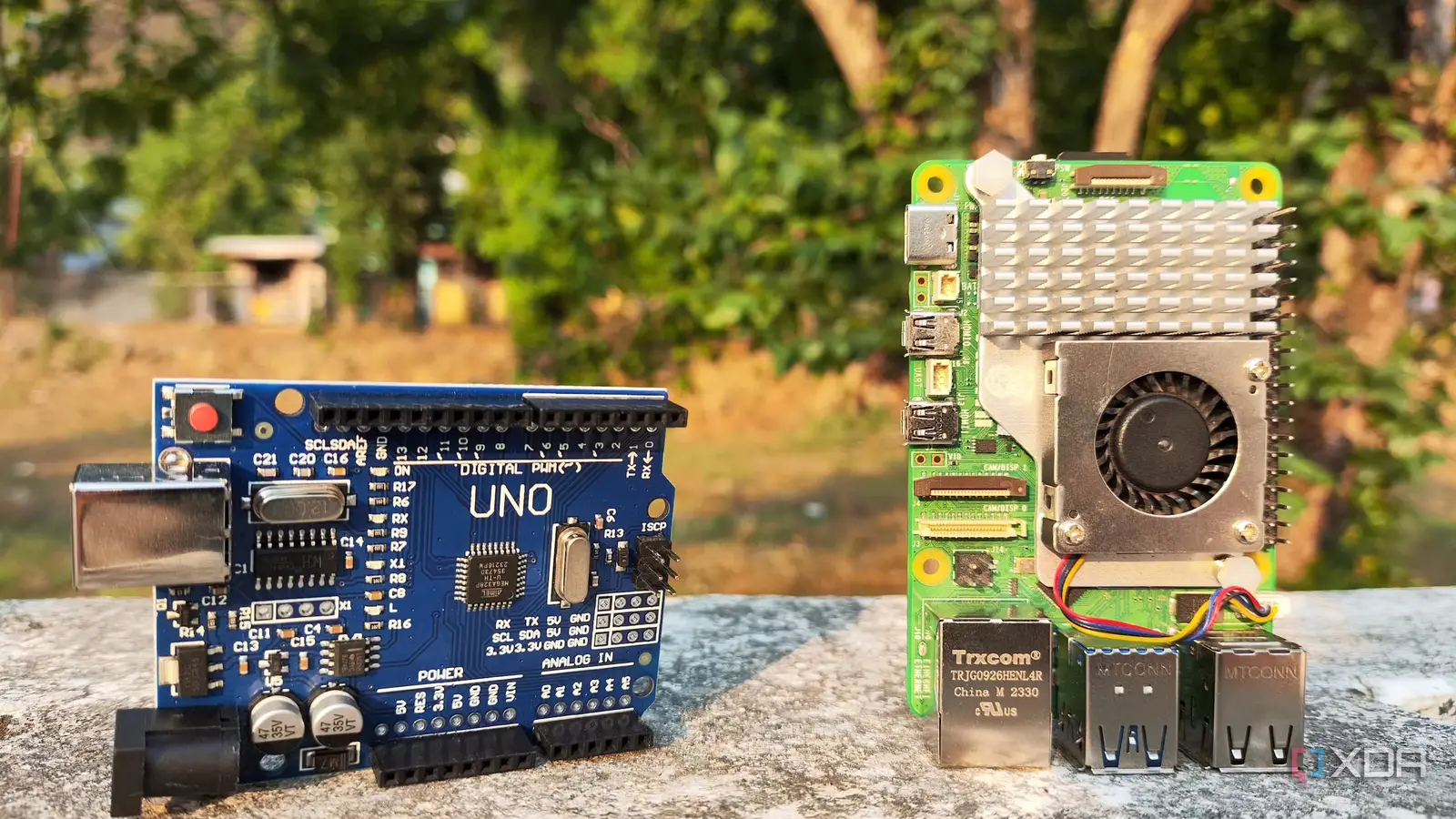Copyright XDA Developers

If you have a home lab, you probably think first about servers, networking gear, and SBCs. Those are all great tools, but they live mostly in the digital world. A basic Arduino board, like the Uno or Nano, adds something different. It connects software logic to real-world results in a way that feels tangible, immediate, and creative. Once you start using one, it quickly becomes a core part of your tinkering toolkit. It connects the digital world to the physical one Turning abstract code into tangible experiments The Arduino bridges the gap between code and real-world action. It lets you control LEDs, motors, sensors, and relays with just a few lines of code, bringing your experiments to life. You can write a program, upload it, and instantly see it move something or measure a change. That direct feedback helps you understand electronics and programming in a deeply practical way. While it’s true that the Raspberry Pi and other SBCs include GPIO headers for connecting to electronics components like LEDs, sensors, and so forth, quite often the breadth of capabilities of an SBC is wasted on projects a microcontroller is perfectly suited for. Furthermore, the programming tools for Arduino projects often provide a much quicker path to testing your code after changes. This immediacy also makes the Arduino perfect for experimentation. You can change a wire or modify a line of code and watch the effect immediately. The board is resilient, and even when you make mistakes, you can usually fix them by unplugging it and starting fresh. It’s a forgiving learning tool that invites curiosity instead of punishing it. Because it can interact with so many sensors and modules, the Arduino also complements your existing lab setup. You can build small control systems, collect environmental data, or trigger alerts for your other devices. It transforms your home lab from a digital playground into an environment where hardware and software work together in real time. It’s affordable and easy to replace Experiment freely without worrying about cost A basic Arduino board costs less than a few cups of coffee, and that’s part of its magic. You can experiment without fear of breaking something expensive or irreplaceable. The low cost makes it easy to keep a few boards around for different projects, whether you’re monitoring temperature, measuring power usage, or automating lights. This affordability encourages bold ideas because the risk is so low. Cheap doesn’t mean limited, either. Even the least expensive models are powerful enough to handle complex inputs and outputs, timing, and communication tasks. With just a handful of extra components, you can create surprisingly capable devices. It’s one of the few tools that delivers impressive results without requiring a significant investment. The minimal hardware requirements also help keep costs down. You don’t need special cables, software licenses, or expensive accessories to get started. Everything you need is available online for a few dollars, and most of the libraries and tutorials are free. That accessibility makes it one of the most cost-effective ways to expand your home lab’s capabilities. It integrates easily with other systems Extending your lab’s automation and data collection The Arduino fits naturally into any home lab because it’s designed to communicate. You can link it to a Raspberry Pi, mini PC, or even a networked server through serial or I2C connections. With a Wi-Fi or Ethernet module, it can send data to dashboards, control devices remotely, or even publish information through MQTT. This flexibility turns it into a vital link between your sensors and your automation systems. Because it runs on lightweight firmware, the Arduino doesn’t rely on complex software stacks or operating systems. It performs its programmed task reliably and continuously, making it ideal for automation and data logging. You can leave it running for weeks, and it will quietly collect readings or trigger actions without any maintenance. It’s an excellent companion for systems that need reliable, low-level control. This integration potential also makes the Arduino great for experimentation with IoT concepts. You can set it up to record temperature and humidity, log the data into Home Assistant, and visualize it alongside other metrics. As your lab grows, the Arduino remains a simple, robust node that ties everything together. It’s a way to make your digital projects interact with the world around them. The learning curve is gentle but rewarding Build confidence while mastering core electronics concepts The Arduino is a friendly introduction to the world of electronics. It teaches you the essentials of circuits, programming, and sensors without overwhelming complexity. You start small, perhaps blinking an LED or reading a temperature value, but each project builds on the last. Before long, you’re comfortable with resistors, capacitors, and code logic that applies far beyond the Arduino itself. Its programming environment is designed for beginners but flexible enough for advanced users. The Arduino IDE is simple, with clear examples and quick upload times. Each experiment gives you a visible result, which keeps you motivated to explore more complex projects. The board rewards curiosity and experimentation in a way few learning tools can match. Another strength is the community that surrounds it. Millions of users share their projects, troubleshoot each other’s code, and post ideas online. That level of support means you’re never alone when you hit a roadblock. The constant exchange of knowledge keeps the experience engaging and ensures there’s always something new to learn or build. The ecosystem is open and community-driven An endless source of ideas and shared innovation Arduino’s open-source design is one of its most enduring advantages. Every circuit diagram, firmware version, and library is freely available for anyone to use or modify. This openness encourages collaboration and creativity, allowing people around the world to contribute new ideas and hardware extensions. It’s a culture built on sharing rather than exclusivity, which keeps the platform vibrant and evolving. The range of compatible add-ons is massive. You can find shields for Wi-Fi, Bluetooth, motors, GPS, displays, and countless other functions. Many of these accessories are inexpensive and come with ready-made code examples, lowering the barrier to innovation. With each module you add, the Arduino becomes capable of tackling more ambitious projects in your lab. What really sets the community apart is its enthusiasm. Makers, educators, and engineers constantly create tutorials, publish libraries, and release open projects for others to build on. This constant cycle of sharing keeps your Arduino from ever feeling outdated. It grows with you, adapting to new ideas and technologies as your home lab evolves. Why this small board has a big impact



